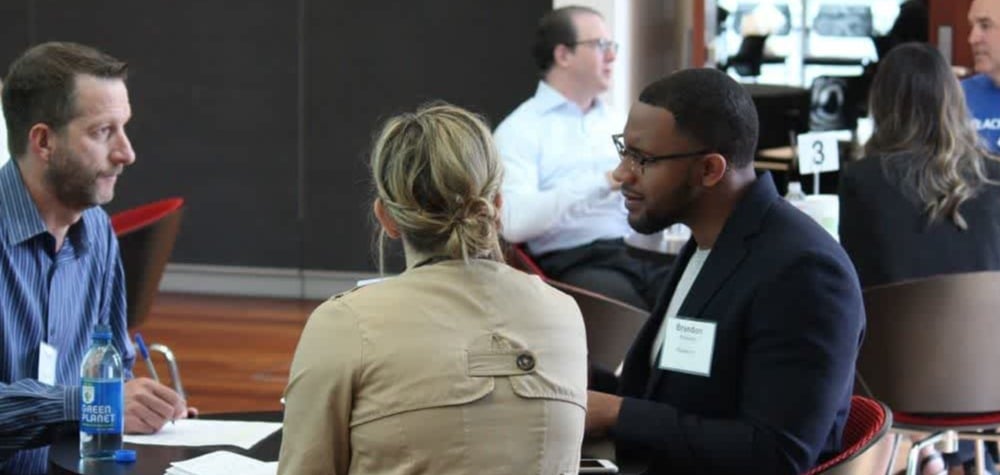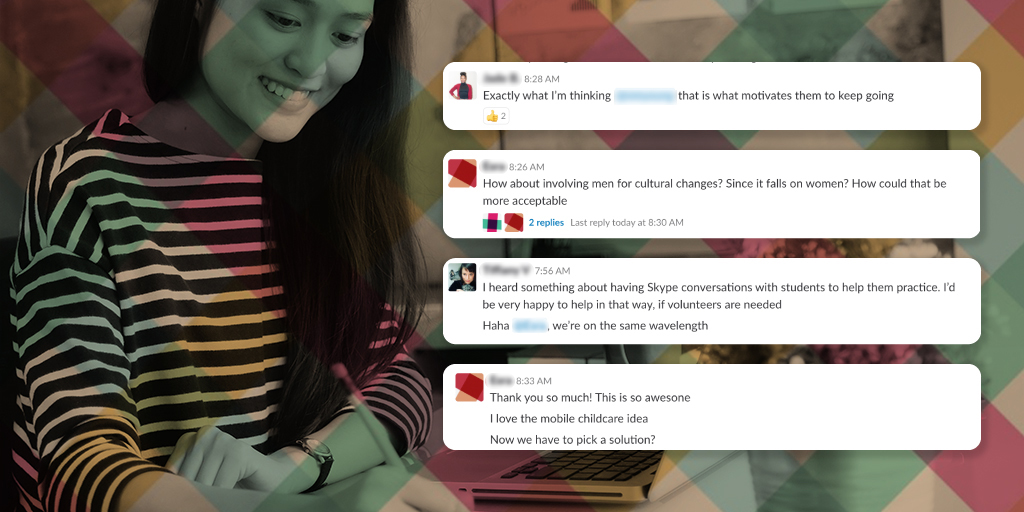Leadership
Fundraising for nonprofits: Avoid mistakes and grow partnerships
How to avoid common fundraising mistakes and build partnerships to secure and scale funding with trust and transparency
50 minutes
Fundraising is fundamentally about two partners — the nonprofit and the donor — working together to achieve a shared mission. Donor relationships built on trust and transparency can propel nonprofits toward greater impact and financial sustainability in the long term.
Mistaken mindsets
Whether raising major gifts from individual donors, partnering with local businesses and corporate giving programs, or writing grant proposals to foundations, many social innovators share a few “mistaken mindsets” about nonprofit fundraising.
Headstreams is a nonprofit that believes in the power of play for childhood learning and development. Their mission is to bring play-based curriculum and learning spaces to public schools, libraries, child care centers, and other community settings in low-income areas of Karnataka, India.
Even on the most demanding of days, Naveen Thomas, co-founder of Headstreams, found excitement and fulfillment from delivering these programs. Fundraising, however, always felt like a chore.
“We saw fundraising as an energy-draining and unproductive use of our time,” Naveen said. “We pushed it until we couldn’t push it any longer.”
Several years into their journey, Naveen realized that Headstreams’ approach to fundraising was preventing the nonprofit from carrying out more ambitious programs.
“As a project was coming to an end, we would suddenly realize that we had to either find a new donor or go back to an old donor,” he explained. These small, short-term grants didn’t allow Headstreams to plan for multi-year programs that would reach a larger number of children.
For Headstreams to achieve its mission, Naveen knew he needed to take a different approach. He enrolled in Nonprofit Fundraising Essentials, a free online course from Acumen Academy that introduces entrepreneurial mindsets and strategies for nonprofit fundraising.
“The change in perspective was empowering,” Naveen said. “I feel more equipped to look at fundraising as a part of our mission, rather than disconnected from the rest of the work that we do.”
Fundraising challenges like these are common across nonprofits. But with a fresh mindset and proven strategies, you can build lasting partnerships and escape from the cycle of fundraising despair.
Building trusting relationships
Fundraising is all about partnerships: The donor and the nonprofit work together to achieve a shared goal, and each partner brings their unique resources to the table. Building effective partnerships like these requires cultivating relationships based on trust, transparency, and honest conversations.
Partnering effectively takes time and commitment. If we believe that moral revolution requires everyone, we must become skilled at building trusting partnerships across sectors. Honing this skill almost always requires a shift in both assumptions and behaviors.
Jacqueline Novogratz
Founder and CEO, Acumen
- identify common fundraising mistakes,
- adopt tools and strategies to avoid them, and
- build stronger, trusting relationships to secure and scale your funding.
Mistake 1: Not doing enough research
Many fundraisers feel let down when they see foundations giving large amounts of money to other organizations, despite their own efforts to make a connection. Others feel confused when an individual with deep pockets isn’t interested in funding their highly successful program, even after a seemingly persuasive pitch.
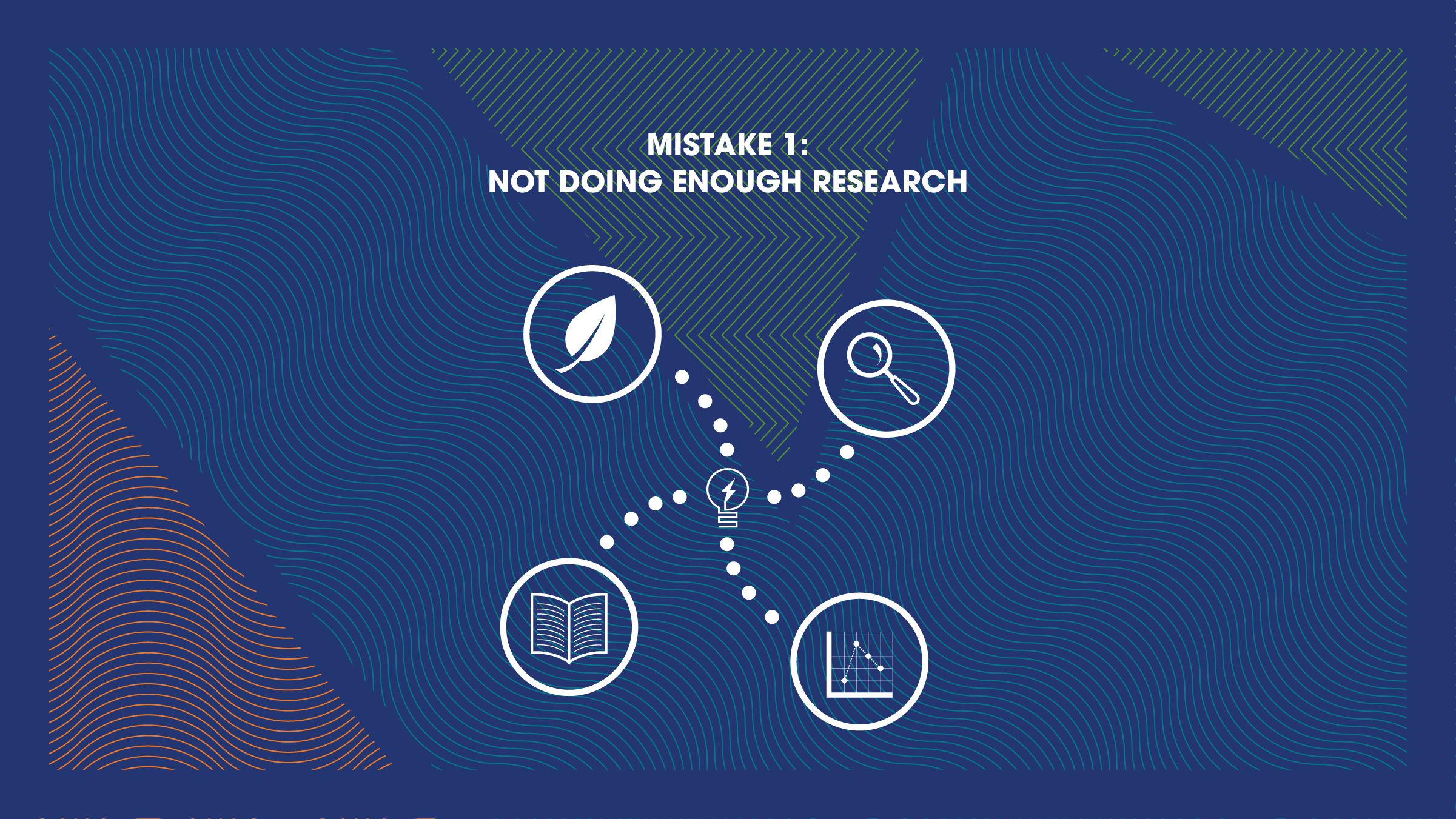
How to start your research
While research is a critical first step to successful fundraising, you may be unsure about how to get started. This is especially true if you don’t already have an existing rolodex of contacts.
Below are a few strategies to help you start your research.
Research your ecosystem
Doing research within your ecosystem — which includes donors that are funding your line of work and organizations that are similar to yours — can help you start a strong list of prospective donors.
Research your network
- Who could make an introduction to a corporate giving program?
- Who could donate supplies or professional services?
- Who has a large number of followers on social media?
- Who has the ability to make major gifts?
Connect with your target audience
Close
Approach the right people
If your organization is looking for seed or operational funding to get started, your target audience will include donors who are excited about funding new ideas or initiatives. By contrast, a foundation interested in funding established programs with rigorous data and success stories will not be a good fit.
Cultivate in the right way
Find the right timing
Make the right ask
Mistake 2: Having unclear fundraising goals
In the previous section, you learned that research is an important process for both identifying and connecting with your target audience. You cannot make meaningful connections without understanding your donor’s interests, motivations, and giving capacity.
To build a trusting and transparent relationship with a funder, you must also understand your financial needs and how the resources you’re requesting will help your nonprofit achieve its intended outcomes. Many times, fundraisers fail to make a clear connection between what they're asking for, and why they're asking for it.
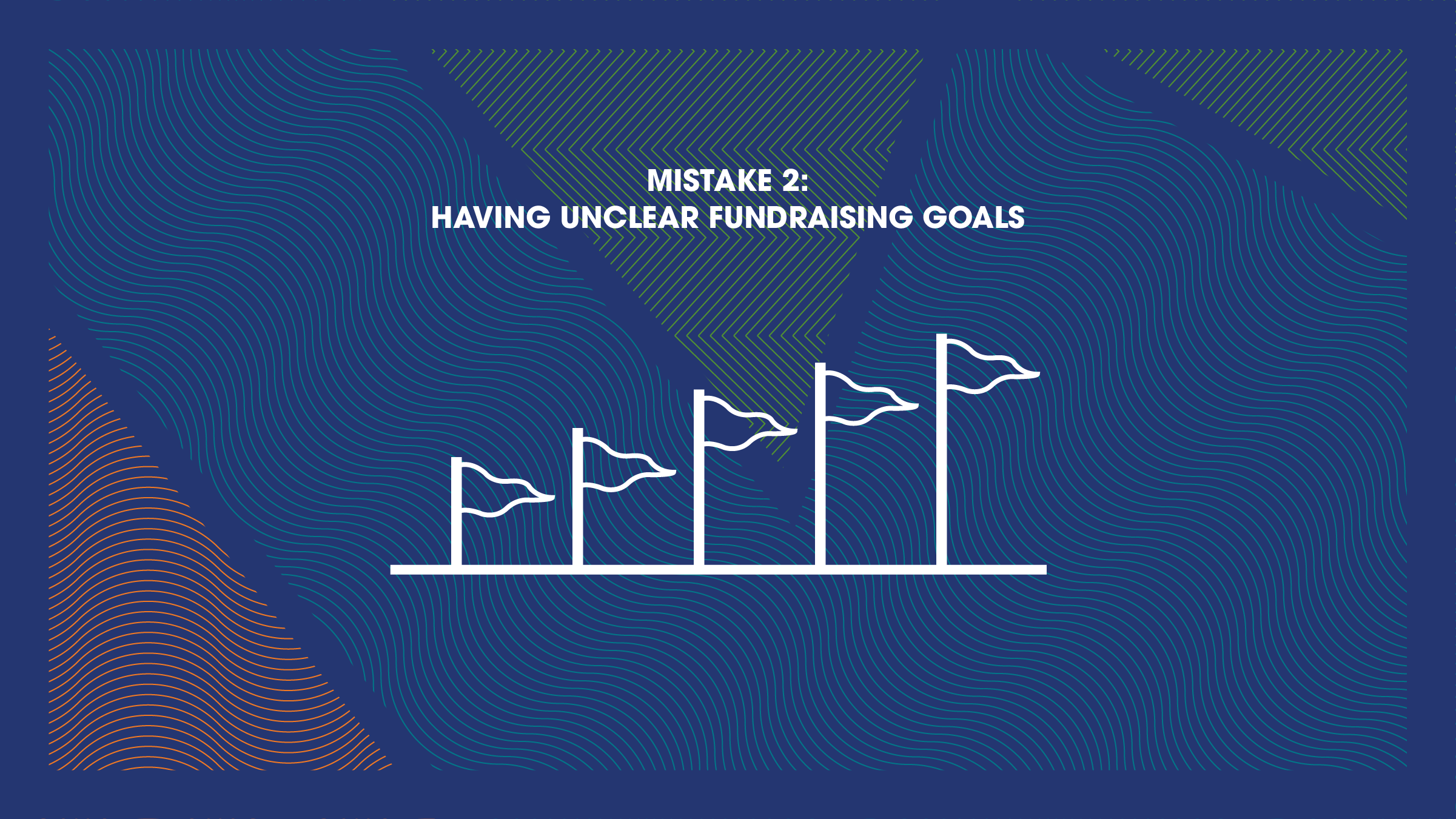
Tips to determine your fundraising goals
- Are you dependent on a single donor or grant?
- Is your cash flow (or the flow of cash in and out of your nonprofit) reliable?
- Do you have reserves set aside for unexpected disruptions?
- Do you intend to scale your programs or geographic reach?
- Specific: Your goal is clearly defined and understood.
- Measurable: You can measure whether you have achieved your goal.
- Attainable: Your goal should be ambitious, but realistic for your team.
- Relevant: Your goal should advance your mission.
- Timebound: You have a deadline for achieving your goal.
Be transparent about your funds
- Revenue: Your revenue is predictable and reliable.
- Expenses: You’re transparent, understand the full costs of your work, and account for these costs in your budgets.
- Profitability: You have a consistent surplus that allows you to pay debts, purchase equipment or infrastructure, and fund savings or growth.
- Liquidity: Your nonprofit can meet obligations and respond to risks and opportunities with available cash.
- Financial planning: Your nonprofit can plan for the future and access timely and accurate financial data.
- Balance sheet: Your balance sheet represents the difference between everything you own (assets) and owe (liabilities) at a moment in time.
Understand your capabilities and when to say no
- Are we capable of delivering this project successfully?
- Does the project support or distract from our mission?

A LONG-TERM VISION FOR A SUSTAINABLE PATH FORWARD
Securing funding and learning to navigate donor expectations can be challenging for nonprofits. Pausing to reflect on your long-term vision can help you plan for a sustainable path forward.
Krupa Patel is an Acumen East Africa Fellow and co-founder of Anza, which is a business incubator, investment readiness accelerator, and co-working space with a mission to drive job creation and scale businesses that provide life-improving products and services in Tanzania.
Krupa was born in the United Kingdom to parents who were born and raised in Uganda, and who left the country as refugees in the 1970s. She and her sister knew they would return to East Africa one day. In 2009, they sought out a gap they could fill in the market.
“We realized that entrepreneurs had a significant ability to drive improvements across all sectors of society and to provide access to basic services in healthcare, education, water and sanitation, energy, and the agricultural value chain,” Krupa said. “However, the entrepreneurial journey is a difficult one, even more so in an economy like Tanzania that ranks among the lowest on the scale of ease of doing business.”
To ease the burden on entrepreneurs, Krupa knew she needed to provide a range of meaningful services through Anza, as well as flexible and affordable capital.
Before she could grow her social venture, Krupa needed to learn how to navigate the expectations of donors and understand when to say “no” to a funding opportunity, which is often challenging for newcomers to the sector.
After three years of growing Anza, Krupa was invited to her first meeting with a regional family foundation. She jumped on a bus and traveled to a coffee shop several hours away to meet with a program officer at the Segal Foundation, which funds grassroots leaders in Africa.
“By this point, we had a lot more clarity around our programs and the methods we used to support our entrepreneurs,” Krupa said. “However, I couldn’t respond to any of their technical questions. They asked about our plan for monitoring and evaluation, and I didn’t know what that was.” Many of the funder’s questions focused on the nonprofit’s finances, such as its operating budget and percentage of earned revenue (or self-generated income). They also asked about the nonprofit’s theory of change and how Krupa would know if the interventions resulted in the outcomes she expected.
“You could see they were not surprised, but perhaps more concerned,” she said. “I remember getting so flustered and thinking, this is way too early to start talking to these large, formal foundations. Let’s close our doors, go into hibernation for another year, figure out these technical terms, and get all these systems into place.”
Then Krupa received surprising news: The Segal Foundation decided to fund Anza. In the end, the foundation combined grant capital with training and technical assistance to ensure Anza would be ready for success. “I think what I really appreciate about them — and what I now look for in any funding partner — is that they met us where we were,” Krupa said. “Over the years, I’ve learned that even the largest not-for-profits are a work-in-progress. We’re all progressing toward something.”
“I think it’s important to be transparent in your relationships with funders, especially in the early days,” she continued. “It’s kind of like dating, right? At some point, they will wake up and understand the reality of who you are. I think our transparency at that early stage helped the foundation know our gaps, and then they could provide technical assistance around our needs.”
As Anza grew and took on more funders, Krupa learned the importance of having a long-term vision and a clear picture of her financial needs.
“You start by saying, ‘We want to be here in five years,’” Krupa said. “Therefore, these are our strategic priorities for the next 12 months, and we’ll need these programs and staffing. That is the overall scaffolding of an operating budget.”
By starting with her budget and strategic priorities, Krupa understood exactly why she was fundraising and how much she hoped to raise. She also learned when to say “no” to an opportunity.
“We’ve experienced one or two partnerships that overstretched us,” Krupa said. “It’s important to take on the right type of capital. It can be a difficult decision — for example, there may be a period of time where you need cash flow to make payroll and you will be tempted by a large grant.” “But unless it is truly mission aligned, it could end up taking you on a detour,” she said. “It might not seem like a terrible thing, but a few years later, you’re a very different organization from the one you initially intended to become.”
Today, Krupa sits on the Board of Advisors at Anza. One of the board’s responsibilities is assessing whether a funding opportunity is aligned with the nonprofit’s theory of change.
All in all, Krupa’s unrelenting focus on her long-term vision has helped Anza grow sustainably. When you’re clear about your resources, capabilities, and mission, you can build transparency with your partners and operate with greater impact.
Mistake 3: Building a communications strategy without your funders in mind
As you learned in the section on research, it’s important to keep funders’ interests and motivations at the center of your fundraising strategy. Communicating with funders effectively helps prevent your donor from having to guess how or where they fit into the mission of your work.
“Sometimes we fall into the trap of letting the donors do the hard work of figuring out exactly how it connects and what their donation or investment will achieve,” said Hannah. “Make sure that connection is crystal clear and aligns with exactly what they're trying to do.”
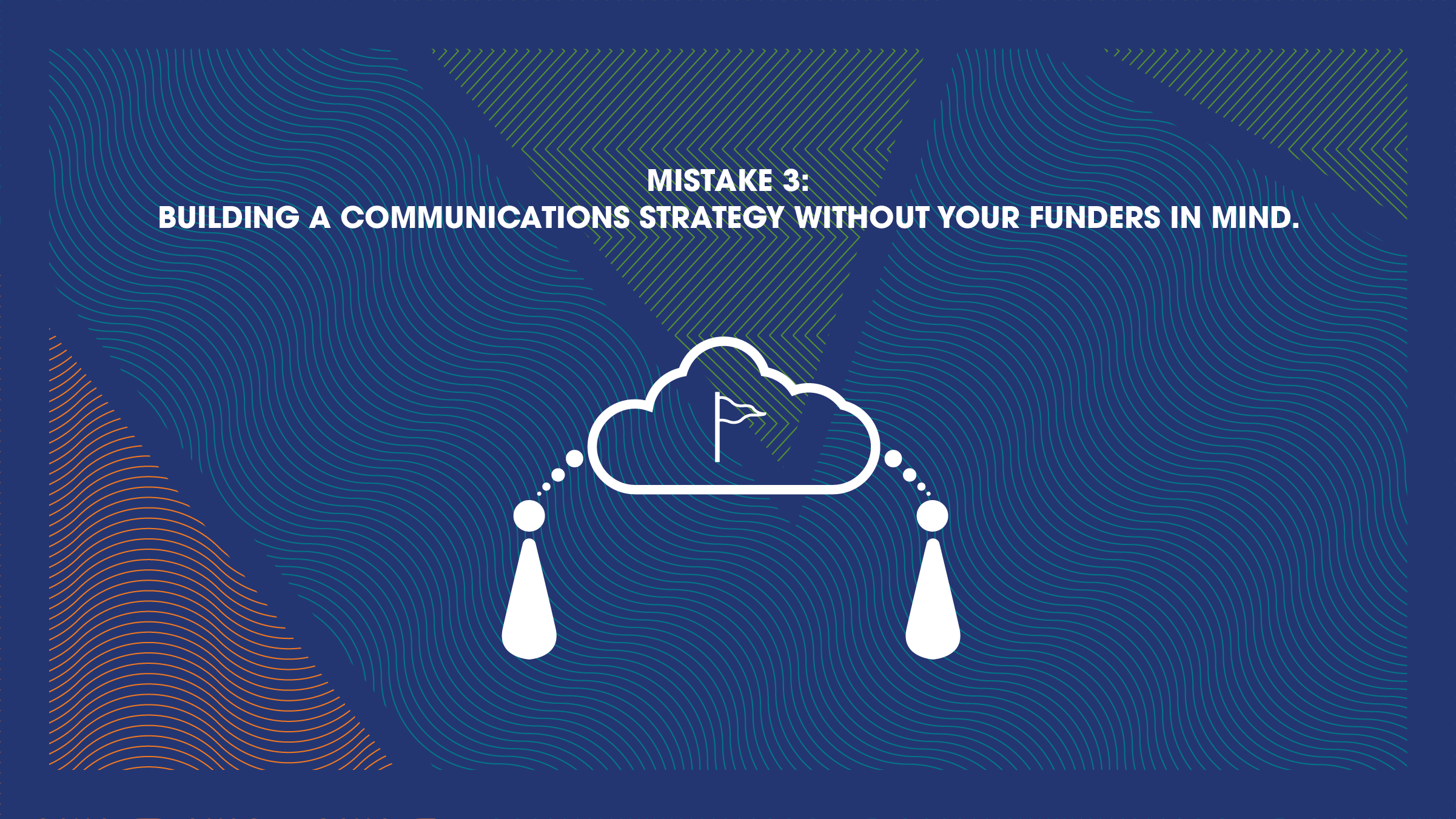
Tailor your communication strategy
Close
Your mission statement
- “A world where all women and their families experience childbirth safely and with dignity” — Jacaranda Health
- “Bringing clean, safe drinking water to people in developing countries” — charity: water
- “Reconnecting Africa’s wild spaces to create a future for man in harmony with nature” — Peace Parks Foundation
- “Rehabilitating coral reefs in the Western Pacific”
- “Preventing maternal-child transmission of HIV in South Africa”
Your theory of change
Your impact
- 25 women participated in a 4-hour workshop
- 75% of workshop participants paid off their debt to moneylenders within three months
Your value proposition
Our job as fundraisers is to transmit our passion... We have to actually be passionate and we have to help the person we’re talking to see what we see. And they can see the challenge that we see, although more often than not, it’s better to have them see the opportunity that we see.
Sasha Dichter
Co-founder of 60 Decibels
Fundraising in difficult contexts
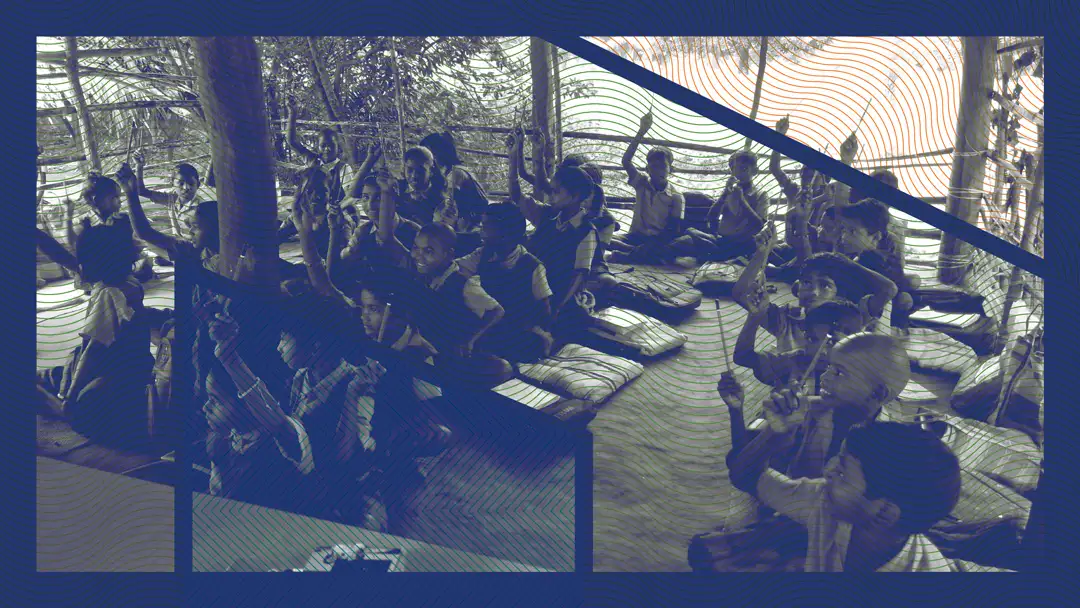
ADOPTING A DONOR-FOCUSED STRATEGY IN A DIFFICULT CONTEXT
In rural and tribal areas of Chhattisgarh, India, many schools have been shut down or destroyed by violent extremism. More than 30,000 children are losing their opportunity for an education.
Ashish Shrivastava founded the nonprofit Shiksharth to improve the quality of education in these conflict-affected areas. Shiksharth is directly serving more than 6,000 children by creating academic resources that are appropriate for tribal areas and working in partnership with local governments.
“We create solutions in three ways,” Ashish explained. “We provide access to schooling because it doesn’t exist. We create safe spaces for the children so they can express and experience compassion and empathy. Finally, we make learning contextually relevant for them. When teaching the ABCs, an airplane doesn’t make sense for a tribal child, but an arrow does.”
However, due to the nature of the work and its remote location, Ashish had to figure out how to win the hearts and minds of donors from afar.
“We are in a conflict zone and the nearest city is 400 kilometers away,” Ashish said. “We hardly get visitors. Nobody can see what we do or validate our work. So how do you build credibility?”
“We don’t have access to corporate social responsibility because most corporates will avoid working in conflict areas and taking on any risks that might dilute or become a threat to their brand,” Ashish added. To overcome these challenges and fundraise successfully, Ashish needed to strengthen the ways he communicated with funders, including high-net-worth individuals, small donors, and corporate giving programs.
“At the beginning, there was no structure to our fundraising,” he said. “Whenever we needed money, we would reach out and say, ‘Can you donate?’ We didn’t have a strategy or engage with donors in between the gaps.” In his first year of fundraising, Ashish said his greatest mistake came from not differentiating Shiksharth in his communication with potential donors.
Ashish had to pause and reflect on Shiksharth’s value proposition: What made them different from others in their sector?
Donors “have seen a lot of educational organizations,” Ashish said. “In India right now, every city has hundreds. But when I pitch that I am working for tribal children who are affected by conflict, this is something new that they haven’t been exposed to before.”
But for some donors, the rural and tribal focus was not enough. Ashish needed to create an emotional connection to the work.
“For any donor in Mumbai or Delhi, they can easily go to a slum near their home and support a child,” he explained. “What would motivate them to support someone in a tribal area?”
“Donors always connect through stories,” he continued. “If you say that every child deserves a peaceful childhood, then the donor should immediately remember his childhood and imagine what these children are experiencing. That personal connection is important, and initially, we didn’t do it well.”
Over time, Ashish learned how to pitch Shiksharth in a way that spoke to a donor’s motivations.
“Individual donors often have different motivations than corporate social responsibility initiatives,” Ashish said. While corporations are interested in the unit impact of grants — for example, $1,000 in exchange for reaching 500 children — many individual donors are seeking out solutions with systemic impact.
“To these donors, I explain that our work is not only about these children, or this particular geography, but about building peace in the larger ecosystem,” he said.
Finally, to encourage small donors to support Shiksharth, Ashish illustrates the impact of their modest contribution.
“A lot of small donors get overwhelmed by the magnitude of the problem,” he said. “Then they tend to get disillusioned. They think, ‘If I’m donating one thousand rupees, how is this going to change anything in this country?’ So it is important for them to visually see how even one dollar can have a transformational impact.”
By understanding his nonprofit’s value proposition and tailoring his communication for each donor, Ashish has managed to create reliable revenue streams — including crowdfunding campaigns, individual donors, and corporate giving — in the most difficult of contexts.
Mistake 4: Undervaluing your existing network
Fundraisers often undervalue their existing network. They believe that the only way to secure more funding or larger gifts is to reach out to a new group of people, instead of tapping into their existing network first. This results in missed opportunities and prevents you from building deeper connections with funders who have already supported you in some way.
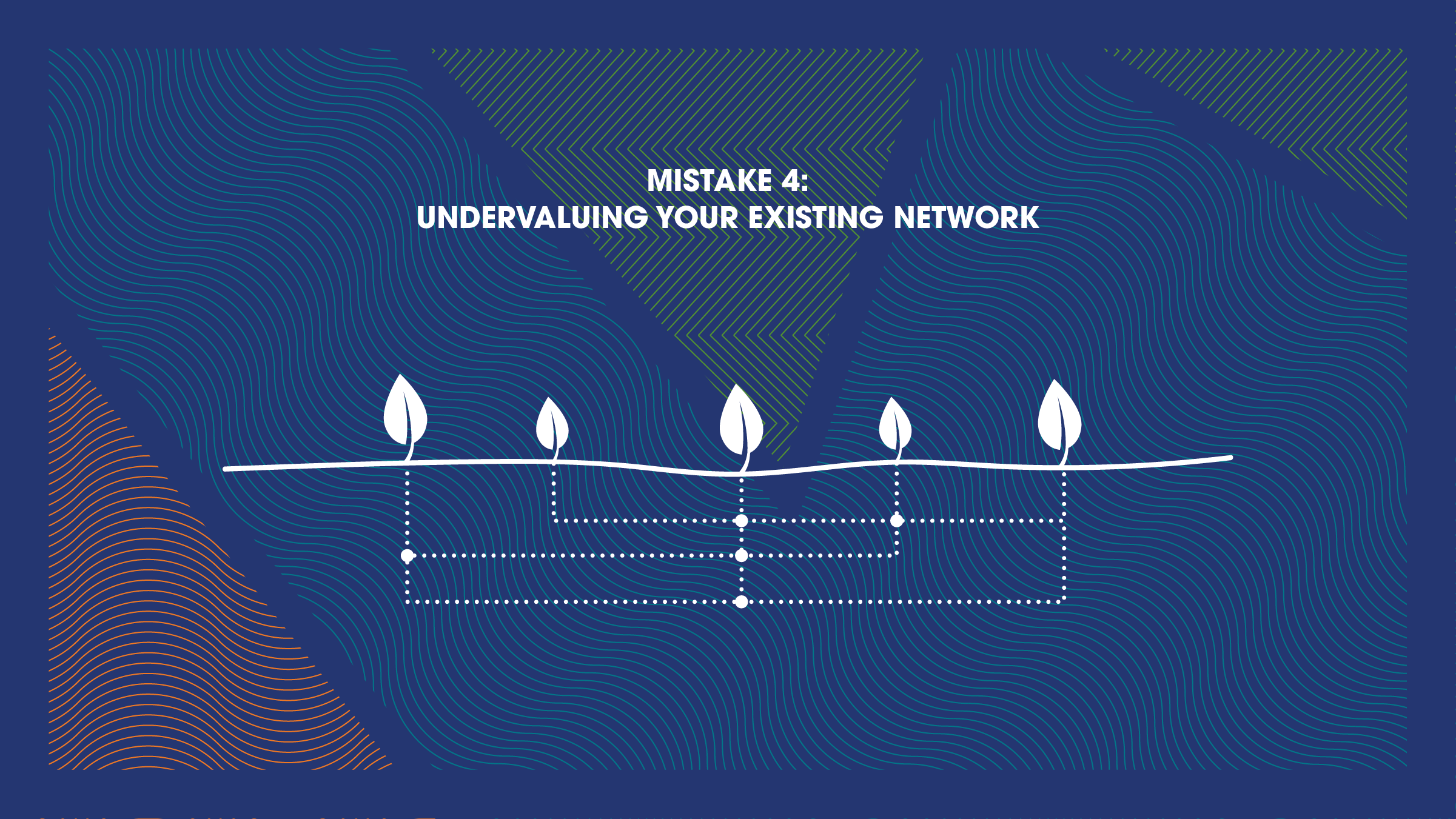
Close
Go from small to large donations
Build deeper connections with your champions
Expand your reach beyond your network
Mistake 5: Approaching fundraising with a limited mindset
Many nonprofits feel like their relationships with funders are one-sided: the funder gives and the nonprofit takes. You might hold your funder on a pedestal. However, this is a limiting mindset that is preventing you from building an honest and fulfilling relationship with funders.
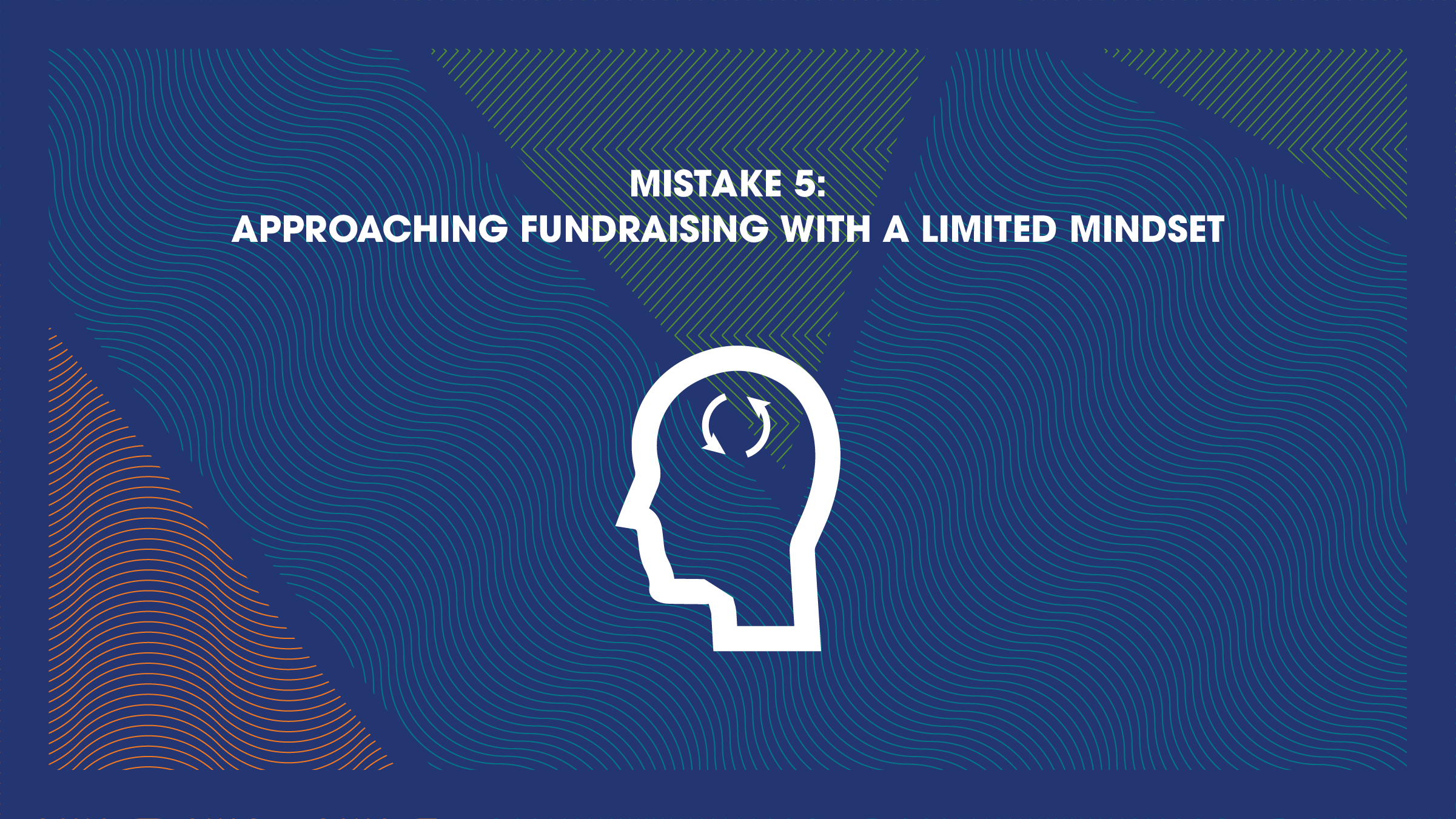
Flip your mindset
Fundraising is not about begging. It is sharing an opportunity with people who want to help. There are many people out there who want to support something they believe in. They want to support something that will make them proud.
Aaron Kirunda
Co-founder of Enjuba
Close
Have robust conversations
Mistake 6: Not knowing when to make your ask
Many fundraisers struggle with knowing the right time to make their pitch. But if you’ve been following the advice in this guide, the moment may come naturally.

Close
Checklist to know your readiness
- How much money do you need?
- How will you spend the money?
- How do you anticipate this money will have an impact on the people you serve?
- Why is donating to your organization the best way for this donor to make meaningful social change?
When you're ready to pitch
Mistake 7: Making a pitch that doesn't resonate with your funder
Nonprofits often make the mistake of delivering pitches that focus mainly on their own challenges and needs. While this approach may seem appropriate — after all, your nonprofit is asking for funding for a reason! — it fails to connect your ask with your funder’s own interests and motivations. The most effective pitches will show the funder how their contribution helps them achieve their own goals.
Look back on all your research and preparation to craft a compelling, personalized pitch.
Close
Refer to your research
- Are you showing how your impact will help achieve their own goals?
- Are you leading with the value proposition that is most interesting to them?
- Does your mission and vision show you’re values-aligned?
- Are your needs clear and is your “ask” precise?
- Is your financial story honest and transparent?
- Is the amount of your funding request appropriate?

Be creative in your delivery
- Main Character: These are the people who are directly impacted by your nonprofit's work. Describe their hopes, fears, and daily lives.
- Conflict: What challenge is affecting your main character and/or their community? It might be lack of access to nutrition, education, job opportunities, or health and safety.
- Action: Explain how the actions of the donor and your nonprofit will help your main character overcome this challenge.
- Impact: Conclude by illustrating how your nonprofit is making a measurable impact in the lives of others who are facing this challenge, but there is still work to be done.

India Fellow
Yogesh Kumar
Yogesh is CEO and Founder of Even Cargo, a social enterprise that trains women from resource-poor communities for employment opportunities with major e-commerce companies. Even Cargo increases the participation of women in the labor market by overcoming barriers of unemployment through skill development. Yogesh is an engineering graduate with three...

Global Fellow
Stephanie Speirs
Steph is a community builder and the Co-Founder and CEO of Solstice, a company that provides community-shared solar power to Americans that cannot install a system on their own rooftop. She was selected as an Echoing Green Climate Fellow, a Global Good Fund Fellow, a Kia Revisionary, and the winner of Obvious Ventures' #worldpositive award, all of which...
- Why am I the right person to be doing this work?
- Why is this work important right now?
- Why is this work important to me?
Mistake 8: Not cultivating relationships with funders you secure
Imagine that you successfully made a pitch and received a large gift. You might be thinking: “I got the gift, they like what I do... Now I don’t have to worry about them until next year when the money runs out.”
However, this mindset can make your funder feel like an ATM, disconnected from your work and the results of their contribution.

Close
Make them feel valued
Treat them like a genuine partner
Make donor-to-donor connections
Be honest
You build trust by showing up, by listening to what someone else has to say, by keeping promises. You build trust through shared endeavor and by the consistency of your words and actions. You build it by admitting mistakes and by communicating both when things go well and when they fail.
Jacqueline Novogratz
Founder & CEO, Acumen
Put it into practice
Now that you’ve done your research and found meaningful ways to connect your donor with your mission, you can use these practices to build a more resilient fundraising strategy.
As you work to avoid the common mistakes nonprofits make when fundraising, make sure to build out systems within your organization that will help you stay focused and organized.
Stay organized
- Name and contact information
- The date you engaged with the prospective donor
- The type of touchpoint (such as an invitation to an event, coffee meeting, or a meeting with an executive or program staff)
- The next date to follow up
Next steps
Discover more
Sign up to our newsletter
I have read and accept the Terms & Privacy
